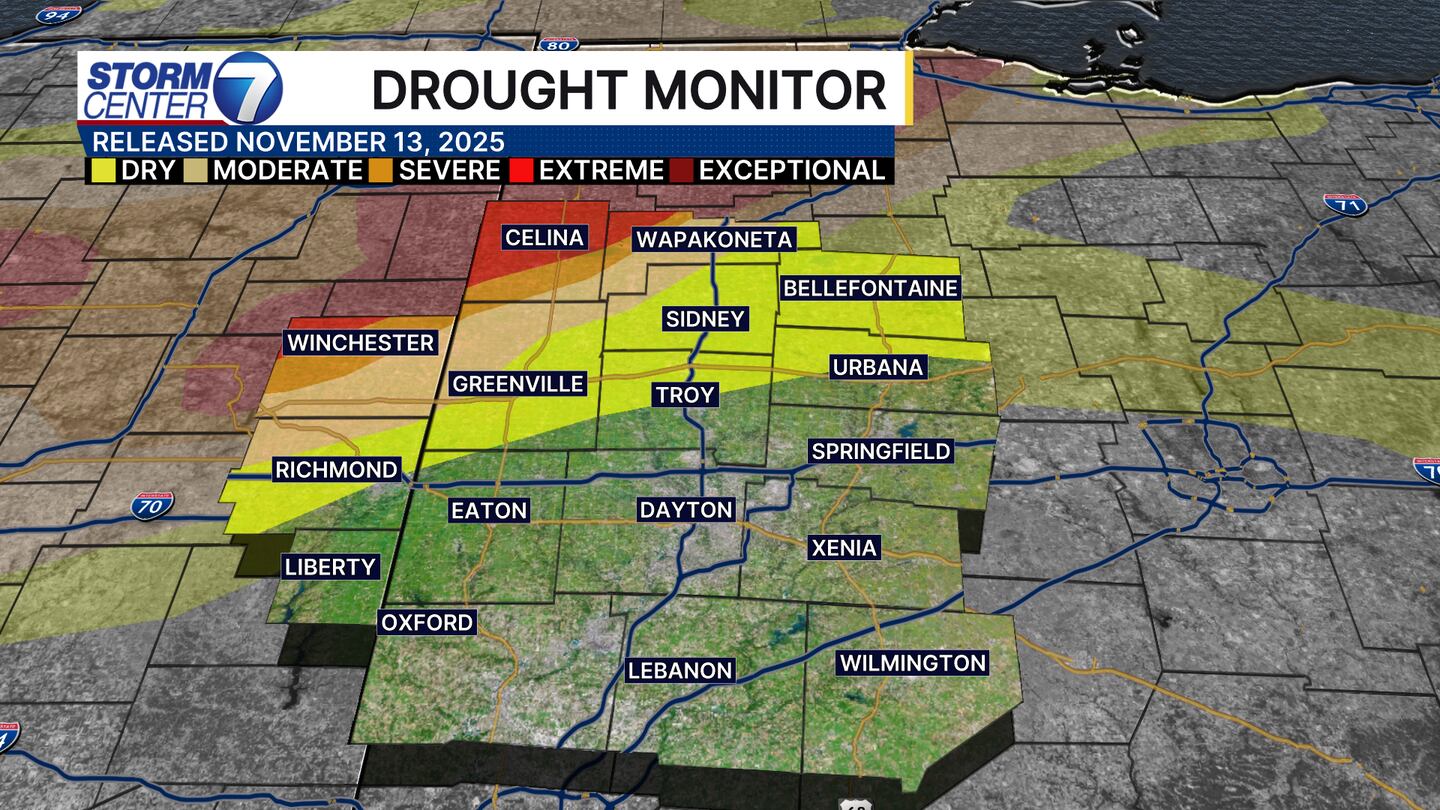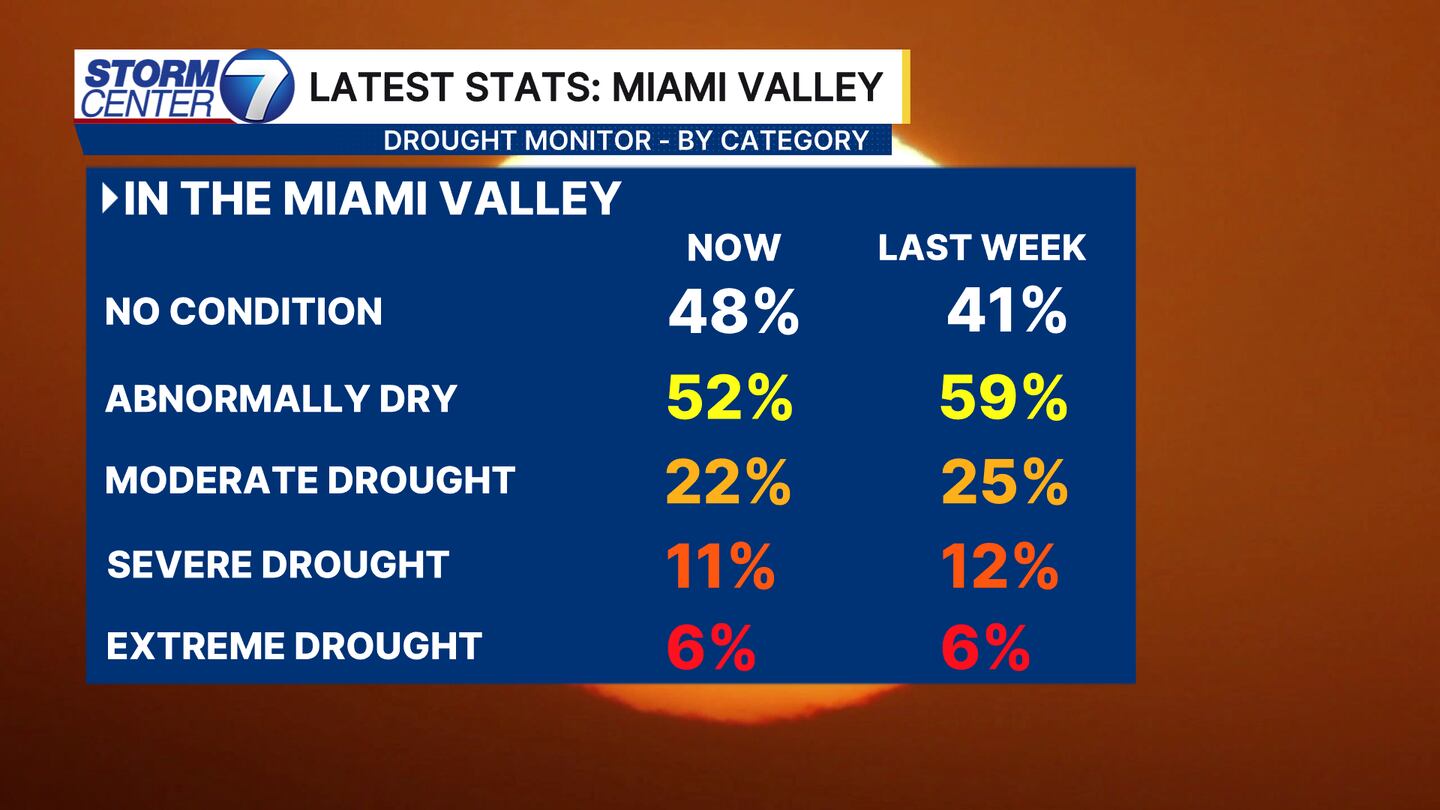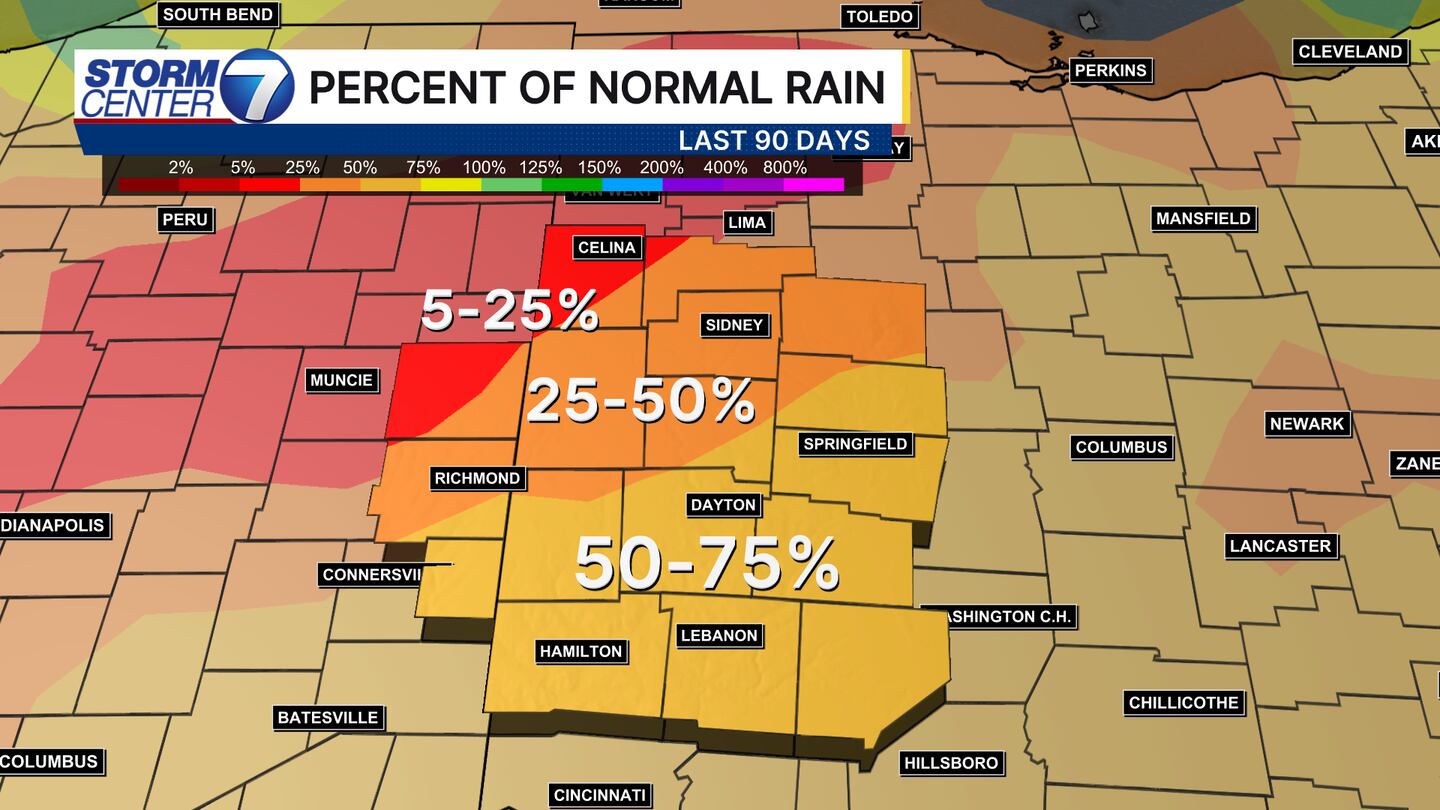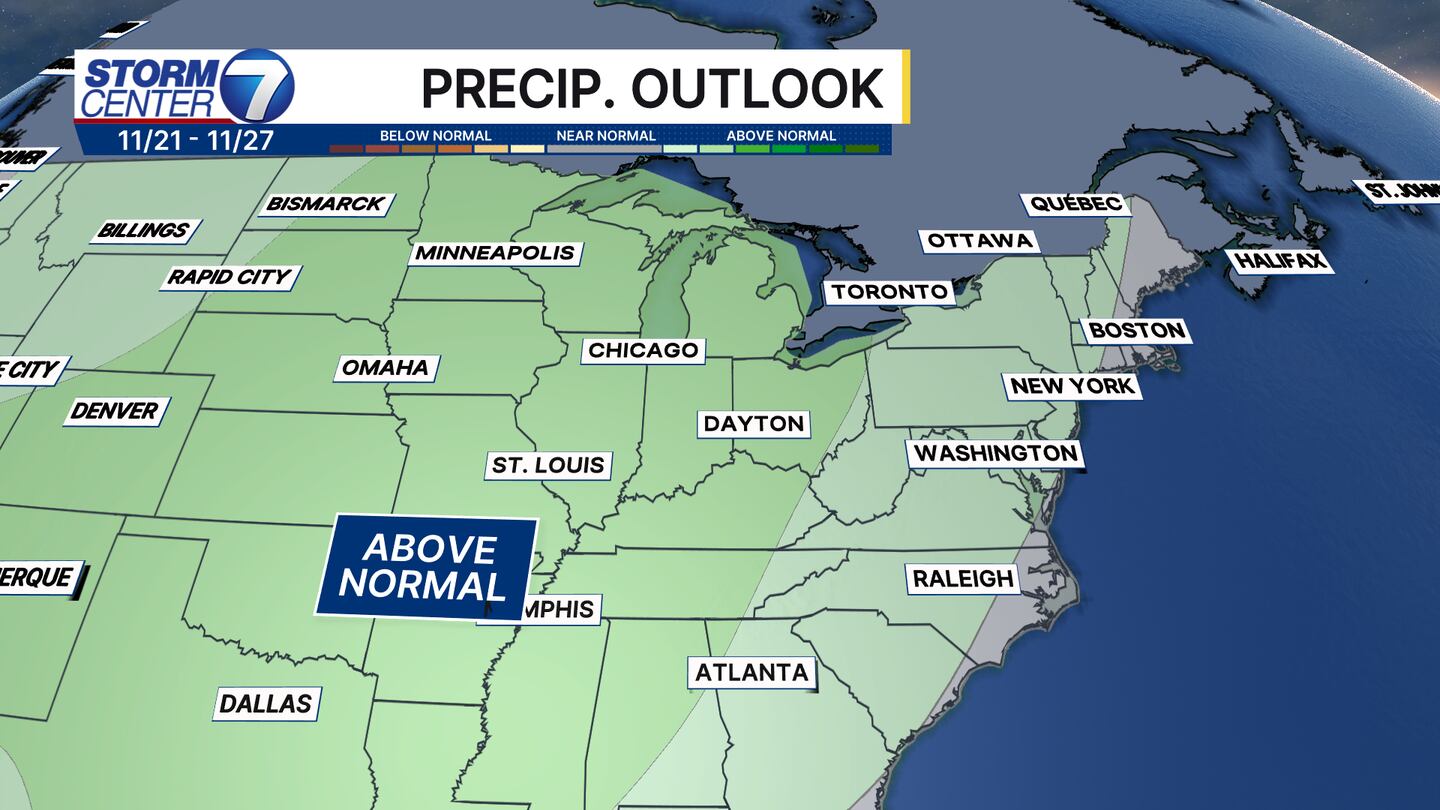DAYTON — Hello, everyone! Happy Thursday to you! Meteorologist Nick Dunn here to check out the latest on our drought conditions. We have been watching drought for what seems like months. I am happy to report that we have seen some additional slight improvements, however, drought continues to persist across the northern Miami Valley.
The latest drought monitor reflects clearly where the greatest precipitation deficits are. Those from Winchester to St. Marys and points north have some of the highest rainfall deficits in the region, especially when we look over the last year.
I spoke to Climatologist Aaron Wilson from The Ohio State University about the rainfall deficits. Wilson told me the deficits from Mercer County and north in the last 30 to 60 days are “minimal, say 1 to 3 inches but into parts of Van Wert County you are looking at deficits of 9 to 12 inches over say the past year. Those are some big deficits, and that’s why we are pretty confident to keep D3 (Extreme Drought) there.”
[DOWNLOAD: Free Storm Center 7 Weather app for alerts as news breaks]
Looking at the Miami Valley specifically, we saw another week where percentages dropped in every category except Extreme Drought. The contours change quickly from Troy to Celina where we have Abnormally Dry to Extreme over a relatively short distance.
Wilson has told me in past weeks we have seen some heavier rainfall miss those worst of the drought stricken grounds of northwest Ohio, so it is evident to tell where beneficial rains have made a huge dent in the drought.
Over the last 90 days we can definitely see how the percent of normal rainfall aligns well with the drought monitor. Parts of Randolph, Mercer, and Auglaize Counties have seen 25% or less of typical rainfall. That aligns with the Severe to Extreme Drought pretty well. Things improve the further south you go, and of course rainfall is relative as it does not fall evenly.
[WATCH Storm Center 7 Weather on the following devices]
Moving into cooler months, the focus for drought conditions focuses on meteorological indicators. Wilson stated, “we have lost our agriculture indicators at this point in the season. We rely on precipitation deficits, rivers, and soil moisture levels now.”
Looking at the 8-14 day precipitation outlook from the Climate Prediction Center we do see odds lean towards above normal precipitation being more likely than other outcomes. However, we will still some dry times. These cooler months lend us a chance to recharge the soil moisture ahead of next growing season!









